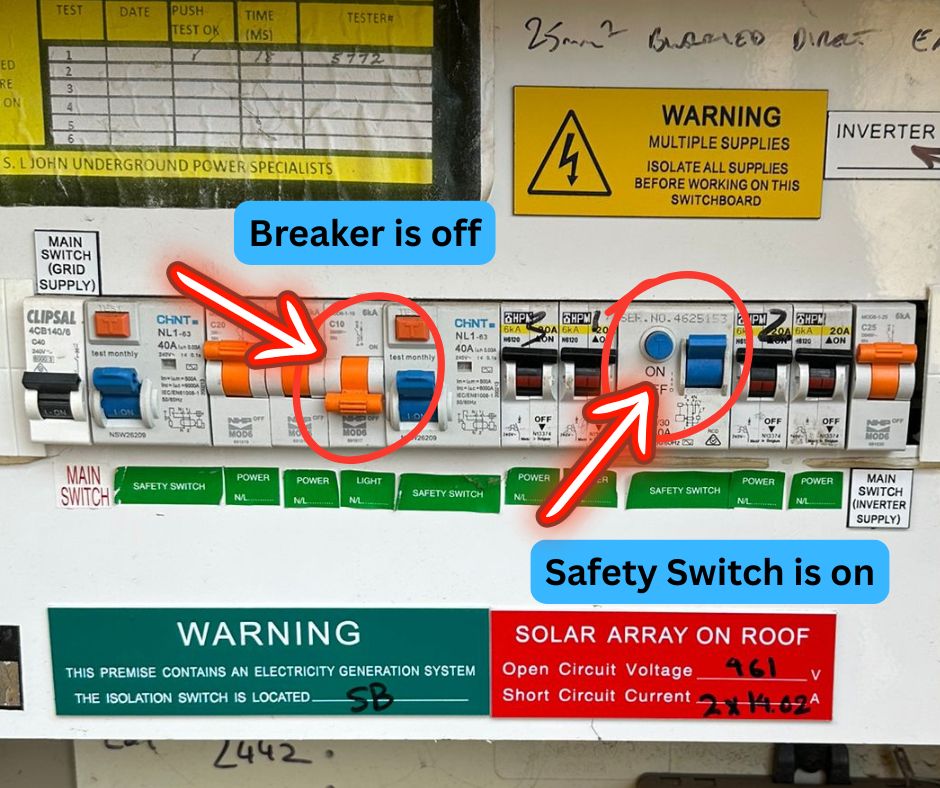Recognising Key Warning Signs That Your Switchboard Requires Immediate Upgrade
When you encounter frequent circuit breakers that trip, lights that flicker unexpectedly, unsettling burning odours, outdated fuses, and an absence of safety switches, these alarming indicators suggest that your switchboard may be a significant safety hazard and might not comply with the latest Australian Standards (AS/NZS 3000). Neglecting these critical warning signs can lead to serious repercussions, including the risk of electric shock, damage to your electronic devices, and even life-threatening fire hazards. It is imperative to engage a qualified electrician to conduct an assessment of your electrical system without delay, ensuring your home’s safety and compliance with relevant regulations.
Exploring the Essential Role of Switchboards in Your Home’s Electrical Framework
The switchboard functions as the core component of your home’s electrical framework, essential for the safe distribution of electricity throughout your dwelling. An outdated or malfunctioning switchboard poses considerable risks to both your safety and overall well-being. Numerous older homes, particularly in Melbourne’s outer southeast region, still operate on electrical systems that were installed many decades ago, long before modern electrical safety standards were put into place. Upgrading your switchboard is more than just routine maintenance; it serves as a crucial step to ensure compliance with current regulations, drastically minimising potential safety concerns that arise from antiquated installations.
This article aims to explore the vital warning signs that indicate your switchboard may need replacement, underscoring the importance of regulatory compliance and the dangers associated with neglecting these critical signals.
1. Frequent Circuit Breaker Trips Indicate Potential Overload Challenges
If you notice that your circuit breakers are frequently tripping, especially when multiple appliances are used at once, this may indicate that your switchboard is experiencing overload issues. Regular trips can disrupt your daily life and may signal poor load distribution, insufficient wiring, or ageing breakers that no longer function safely. Addressing these frequent circuit breaker trips is crucial to prevent more severe electrical problems from developing. For additional insights on improving the reliability of your electrical system, consider exploring our Electrical Panel Upgrade Services.
2. Flickering or Dimming Lights Indicate Voltage Fluctuations
Experiencing flickering or dimming lights, particularly when appliances are activated, often points to issues related to voltage instability. This problem typically arises due to loose or degraded connections within the switchboard, or a system struggling to manage load surges effectively. Such fluctuations can lead to further complications, including damaging sensitive electronic devices. It is essential to tackle this issue promptly to maintain a consistent and safe electrical environment throughout your home, ensuring the comfort and safety of you and your family.
3. Detecting Burning Smells or Heat Marks Indicates Serious Hazards
If you detect a burning smell near your switchboard or observe signs of charring, discolouration, or melted plastic, these alarming symptoms highlight critical issues. Typically, these signs suggest overheating or arcing within the switchboard, both of which significantly elevate the risk of fire. Taking immediate action upon encountering any of these concerning signs is vital for protecting your home and loved ones from potential dangers. For official information on electrical fire risks, please visit the Victorian Building Authority.
4. Outdated Ceramic Fuses Highlight the Need for Modern Safety Features
Finding ceramic fuses in your switchboard, especially those that were installed prior to the 1990s, indicates that your electrical system may be outdated and potentially unsafe. Unlike modern circuit breakers, ceramic fuses lack rapid-response safety capabilities and are inadequate in providing protection against electric shock. Current wiring standards, particularly AS/NZS 3000:2018, require that all final sub-circuits be equipped with safety switches (RCDs). If your switchboard still relies on ceramic fuses, it is not only obsolete but also poses significant dangers that need immediate attention.
5. Warm or Hot Switchboard Panels Indicate Overloaded Circuits
Your switchboard should ideally maintain a temperature consistent with the surrounding room. If you find the surface warm or excessively hot to the touch, this typically indicates poor internal connections or overloaded circuits. Prolonged exposure to excessive heat can lead to insulation degradation or even irreversible damage to the internal wiring. It is crucial to investigate and resolve this issue promptly to prevent further complications and ensure the safety of your home’s electrical system.
6. Outdated Switchboards Struggle with Modern Appliance Needs
As the demand for high-energy electrical appliances in contemporary households increases—ranging from larger air conditioning systems and induction cooktops to electric vehicles and extensive remote work setups—older switchboards often find themselves incapable of safely managing these loads. Many of these outdated switchboards were not designed to cater to current electrical demands, rendering them susceptible to dangerous overload situations. Upgrading to a modern switchboard is essential to ensure that your home’s electrical system can effectively and safely support all your requirements.

7. Absence of Safety Switches (RCDs) Represents Major Compliance Concerns
If your switchboard does not include safety switches (RCDs), your property fails to meet crucial modern protection standards. RCDs are now mandatory for all new installations and electrical work, as specified by AS/NZS 3000. Additionally, recent changes to rental property laws enforced by Energy Safe Victoria since March 29, 2023, require all rental homes in Victoria to be equipped with compliant circuit breakers and RCDs. It is essential to review and adhere to these updated standards to ensure the safety of your property and the well-being of its occupants.
8. Potential Asbestos Exposure in Older Switchboards Represents Health Hazards
Older switchboards, particularly those installed before 1985, may contain asbestos within their backing panels or internal components. This presents severe health risks, as exposure to asbestos can lead to serious respiratory problems and other health complications. The removal of asbestos must be conducted legally by licensed asbestos removal professionals. Therefore, scheduling a comprehensive Home Electrical Inspection with a qualified electrician is advisable before making any alterations or removals of older switchboard enclosures.
9. Unusual Noises from Your Switchboard Indicate Serious Electrical Issues
If you hear unusual sounds such as buzzing, popping, or cracking emanating from your switchboard, or if you notice breakers with scorch marks or melted plastic, these are clear signs of internal arcing or overload conditions. Such problems necessitate immediate attention to avert the risk of fire or damage to your appliances. Taking prompt action is critical to ensuring the safety and functionality of your electrical system.
10. Legal and Insurance Implications Linked to Non-Compliant Switchboards
Having an outdated or non-compliant switchboard can jeopardise your insurance coverage in the unfortunate event of an electrical fire. Compliance with Australian Standards is mandated by both federal and state authorities. Any property undergoing renovations, upgrading appliances, or changes in tenancy must adhere to the latest safety requirements to mitigate legal repercussions and ensure the safety and welfare of all occupants.
Why You Should Trust Direct Point Electrical for Your Switchboard Upgrade
Based in the outer eastern suburbs of Melbourne, Direct Point Electrical is dedicated to providing expert switchboard upgrade services that ensure compliance with current standards while enhancing your home’s overall safety. Our team of experienced electricians specialise in upgrading legacy homes, ensuring adherence to:
- AS/NZS 3000:2018 Wiring Rules
- Energy Safe Victoria requirements
- All local DNSP and safety notice obligations
- Certification through Certificate of Electrical Safety (COES)
Our comprehensive Switchboard Upgrade Services encompass assessment, safe removal of asbestos, installation of RCDs, and optional surge protection to heighten the safety and efficiency of your home’s electrical system.
Common Questions about Switchboard Upgrades
Q: How frequently should I have my switchboard inspected?
A: It is recommended to have your switchboard inspected every five years or whenever you introduce significant electrical loads to your home to ensure ongoing safety and compliance.
Q: Is it possible for me to perform a switchboard upgrade myself?
A: No, switchboard upgrades must be undertaken by a licensed electrician to ensure safety and compliance with current regulations.
Q: What is the typical duration for a switchboard upgrade?
A: Most upgrades can be completed within the span of a single day, minimising disruptions to your daily activities while swiftly ensuring safety.
Q: Will upgrading my switchboard enhance my home’s market value?
A: Absolutely, an upgraded electrical system is attractive to potential buyers and can significantly elevate your property’s value in the competitive real estate market.
The Article: Switchboard Upgrade Warning Signs: Is Your Home Safe? first appeared on https://writebuff.com
The Article Warning Signs of a Switchboard Upgrade: Is Your Home Safe? Was Found On https://limitsofstrategy.com

